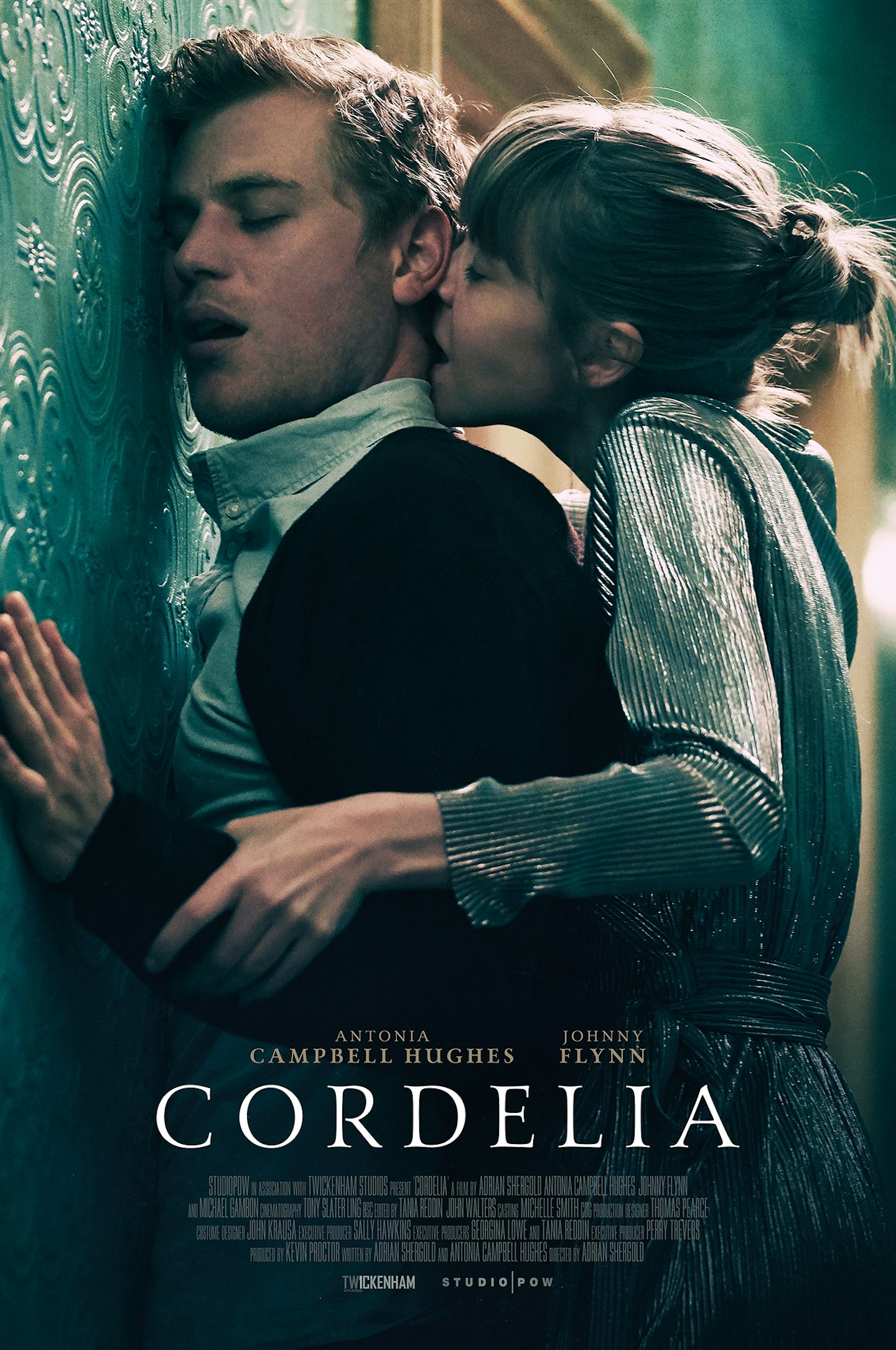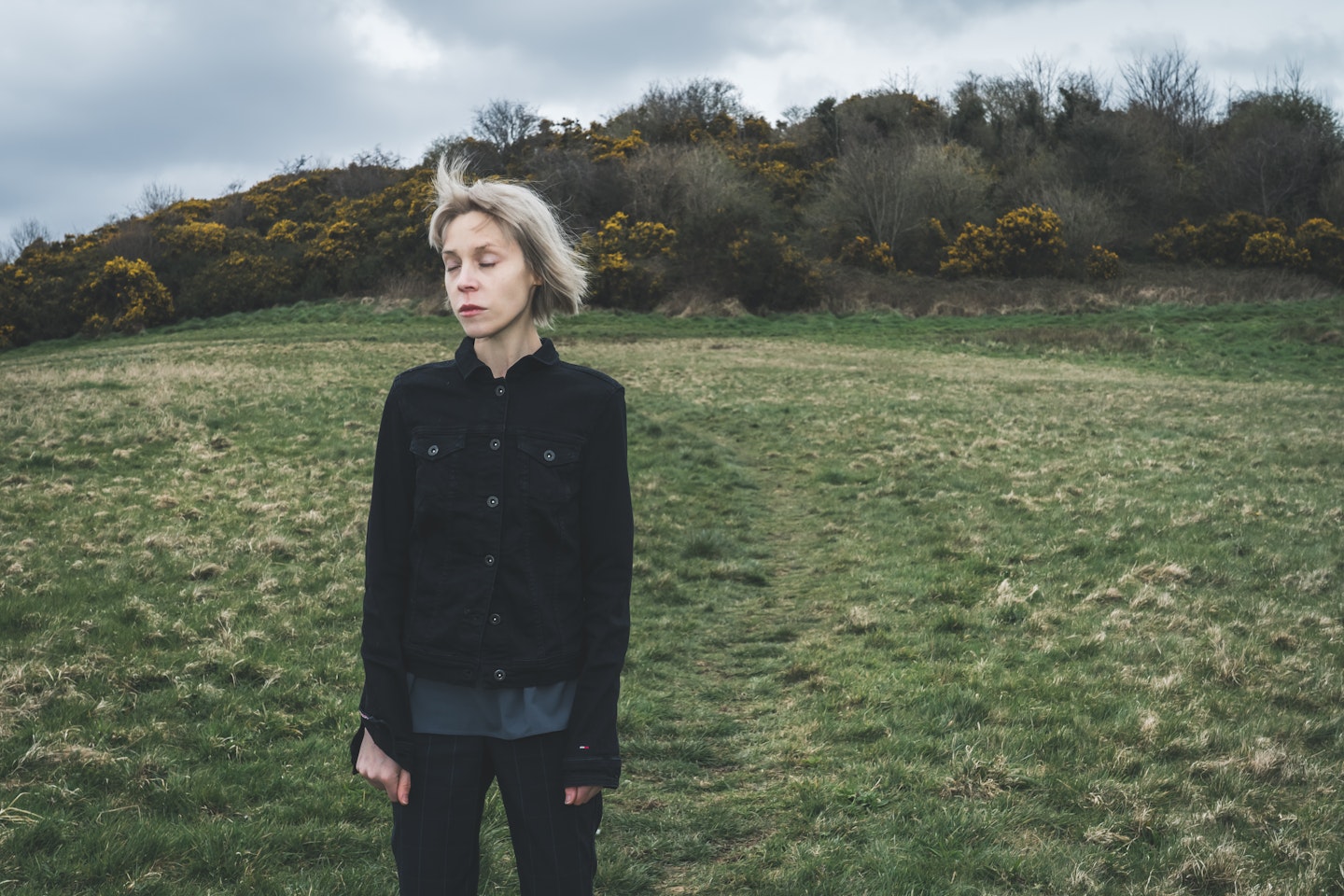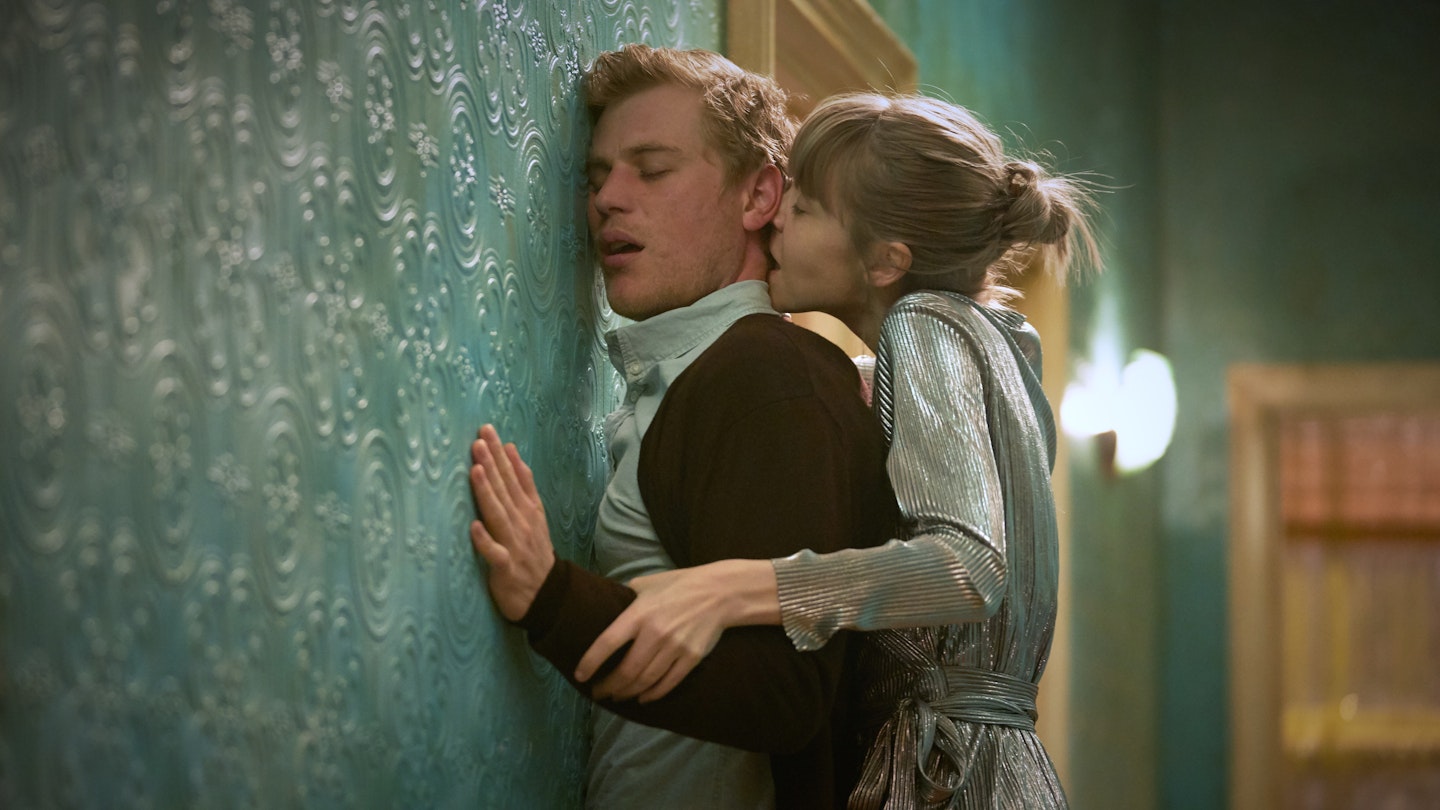When the poster for Cordelia debuted online, social media rushed to celebrate the remarkably striking image. As the film comes to cinemas, Antonia Campbell-Hughes - star and co-writer - reflects on its impact...
I fought extremely hard for this poster and Image choice for the film Cordelia. When I write, I imagine still images that carry the narrative, energy, and personality in one single visual. A film’s representing image has this responsibility on its shoulders.
Many poster designs were put forward by designers; beautiful graphics, tributes to retro cinema, various interpretations of the film’s genre or narrative.
None encapsulated the tone of the film: psychosexual tease, but with a deep pulse of humanity. I felt this still image was necessary to push forward as the core of the film.
It is not a sex romp. It is not about the stereotyped ‘dominant female’, as a novelty gender role flip. Surely this image is ‘human’?

I’ve never really warmed to labels, or steadfast stance. I believe that naturally, some people’s social Identity is fluid. This fluidity is far more commonly spoken about in recent years in popular culture and commercial arenas. Not simply gender and sexual orientation, but our states of power and vulnerability.
This captured poster frame is a moment in the film which is one move, in a back and forth dance of movements. The two characters confront each other, connect with each other, push against each other, flip and turn. Neither is beneath or above... it is a breaking down of walls and allowing vulnerability and cracks. Raw honesty is bare sensuality.
They are two of the same. Cordelia and Frank both hide behind gender social performance expectations. Cordelia is the mouse-like female, as a defence, Frank employs the aloof disarming charm of the ‘male’. This external character is shed by both parties revealing their deep complexities, and true core identity… with that revelation comes nakedness.
Choreographed intimacy in film or even in life is essentially non-intimacy. True intimacy is laced with fear and discomfort, and then, return and consequence, or reward. An exchange rather than objectification.
I worked with an actor once on an intrinsically feminist film, where the word vulva was frequent in the text... He commented that all humans desire to be objectified,...that objectification has negative connotation. Objectification theory would indeed argue this.

I saw Cordelia the film as being a sort of Thriller Horror light with animal themes. The majority of the story plays in an apartment building which I see as being a large organism, and the individuals living within are the biological components that make up the organism. They are two parts of the whole. Quantum parallels, one and the same.
I did find people’s responses both satisfying and then dissatisfying. It seems part of the Twitter attention began with a woman called Harriet Mould, who works with the Lyceum Theatre in Edinburgh. On Twitter she posted the poster image and wrote ‘I legit don't think I've ever seen this pose this way round before.’ She saw the image I set out to create. She got it.
Comments seemed to continue on from then, very much in the thread of ‘why we don’t see this gender dynamic very often’. Then, further down the chain reaction of trend and internet social media immediacy - the essence and meaning of the image was lost.
Apparently people assumed it was a period piece, and were disappointed to learn that the film isn’t. I have absolutely no clue why they would be led to believe it’s a period film from this poster? Assumably because Johnny Flynn does quite a lot of period films. That’s all I can come up with.
Johnny is extraordinary as Frank in Cordelia - complex, vulnerable- quite unlike what we’ve seen before of him.
The poster attention? Sex sells, they say.
Cordelia is in cinemas October 23rd
READ MORE: Pippa Bennett-Warner On Maxxx, Roadkill And A Very Prolific 2020
READ MORE: Isis Davis: 'My Race, Sexuality And Upbringing Shape My Contribution To The Industry'
